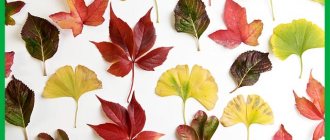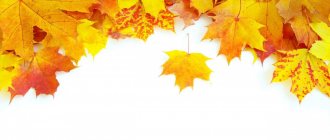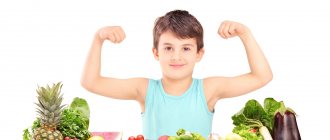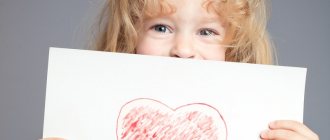Talking to children about autumn
First, the children need to be told about autumn. There's a lot to talk about! There are a lot of purely autumn themes. Here are just a few of them, offhand.
- Why does autumn come?
- What time of year will replace autumn?
- How is autumn different from other seasons? It is useful to expand on this question. For example, in the fall the leaves turn yellow, apples and other fruits ripen, birds fly south, there are frequent cold rains, the sun shines less and less, and it becomes colder. Each part of this question must be explained to the child at a level he can understand. For example:
- Why does the leaves on the trees turn yellow in autumn?
- Why do birds fly away at this time?
- What are the “warm regions” where the birds are so eager? Will they come back, and when exactly?
- What fruits ripen in the fall and what is made from them? For example, apples are eaten, cabbage is salted, etc.
- It is in the fall that it is best to introduce a child to examples of folk art about this time of year. After all, how many wonderful sayings and proverbs have been invented about autumn! Of course, many of them will be incomprehensible to the child, and therefore mom and dad need to explain their meaning to the baby. It is not difficult to find such proverbs and sayings; they are also on our website here.
- Children's poems, fairy tales and stories on an autumn theme are another wonderful opportunity to tell kids about autumn. There are simply an infinite number of such works written on this topic! At the same time, it would be a good idea to learn a couple of “autumn” poems with your child. They will undoubtedly come in handy - both at matinees and simply for developing children's memory.
- By the way, just like songs about autumn: there are also quite a few of them. Why not learn a few of these songs with your baby? Again - they will come in handy. Well, where there are songs, there is instrumental music. Listening to music about autumn (whether for children or for adults) when it’s autumn outside is great, it perfectly develops creativity!
- But there is also painting! Usually children really like to draw pictures on the theme of autumn. So let them do it.
- Well, how can we do without walks in the autumn park, or even better - in the forest, or along the steppe, or along the river bank (if possible) accompanied by mom and dad! Here the child will have a wonderful opportunity to see autumn “live”, and even with mother’s explanations. However, this is a separate, detailed topic.
Reinforcing the theme “harvest”.
Autumn is the time of harvest, we reinforce this theme in an educational game.
You will need real vegetables and fruits that you have in the house. Try to play with real vegetables and fruits, and not with their imitations - children really like it.
If necessary, we pronounce the names of vegetables (although probably at the age of 2-3.5 years this is already a passed stage).
Then we plant them in the garden (put them together on the floor):
Bury (cover with a towel).
We water (for fun, of course).
We shine with the sun - we reinforce in our consciousness that the sun is needed for living things to grow (we took a yellow pillow, which we shook over the garden). You can take anything yellow or shine it with a flashlight.
Finally the time has come to harvest - autumn! We assemble it like this: the baby puts his hand under the towel, feels for a vegetable or fruit there and, without pulling it out, must determine “by touch” what kind of vegetable he found.
This game develops sensory skills (I think logic works well here too).
Learning to count.
We print out the table and cards (everything is very simple there, so if you don’t have a printer, you can draw everything by hand; any mother can draw leaves with a yellow pencil). They can be downloaded here.
Table:
Working with a table:
We count the leaves by running a child's finger or a pointer over them. The leaves are arranged in a traditional ladder - in this form it is easiest to learn the differences between one number and another. It would be nice to hang such a table on the wall in the room and periodically count the leaves with your baby. For fidgets who are very bored with counting some leaves (my daughter is exactly like that), you can make a fairy-tale dramatization. Let a hedgehog or a bunny come to visit, be interested in the sign and cheerfully count the leaves (for example, we told a fairy tale in which a hedgehog came to visit a bunny (soft toys), and the bunny told how he goes to a forest school and teaches mathematics there. The hedgehog became interested and asked to teach him how to count, which the animals did using a table).
A walk through the autumn forest is a fun exercise:
1. “Turn your head left and right.” Walking through the forest, we look to the sides - what is our autumn forest like?
2. We work on the strength of our voice, “stretching out the articulatory apparatus”:
Let's turn into an autumn breeze and quietly, quietly blow (in a quiet voice) “oo-oo-oo”. The leaves on the trees (fingers) move slightly.
Let's blow like a strong wind "Oooh!" - loud! The trees swayed from such a strong wind (they raised their hands up and swayed like trees).
We got lost in the forest, shouting “Ay!” First we scream quietly, then louder, then very loudly!
We approached the bear's den. The bear is already preparing for winter hibernation. He yawns! (open and close your mouth several times).
We collect autumn berries in the forest (imitate finger movements). Let's try the berries (make chewing movements).
How fun and good it is in the forest (smile!)
On the way we met a hamster! Wow, how many grains did he collect in his cheeks (puff up his cheeks like a hamster!)
Here is a squirrel gnawing on nuts! (teeth chattering).
But the squirrel got scared of us and ran away - it just waved its tail (the tongue waves like a squirrel's tail - we stick the tongue out between the teeth, move the tongue like a tail).
The squirrel decided to treat us with nuts. We gnawed on the nuts (our teeth are chattering again), and after eating the nuts we need to brush our teeth!!! (we circle the upper and lower teeth with our tongue).
Autumn store.
After we have collected all the vegetables from the garden (from the previous game), we arrange an autumn harvest fair - we buy and sell autumn vegetables and fruits. Instead of money - cards with leaves (a potato costs one leaf, a carrot costs two leaves, etc.). You can use real coins instead of cards. Let the seller be a cheerful hedgehog or bunny (soft toy), and the buyer be a baby.
When we played, I laid out cards with leaves in a row in front of the “counter” in ascending order to make it easier for the child to navigate them:
At our age (2 and 11), we confidently only count to two. Counting to three or four - we are just mastering it - apparently the child is not ready yet (we master counting very well if we play with coins in the store). But in this game with the number “three” it became better - Dasha began to quite confidently find three pieces of paper (probably thanks to previous games in the store), and even found four pieces of paper without a hint (I was surprised! After all, we haven’t gone through 4 yet! Apparently she figured it out on her own , since cards 1,2,3 did not match the description).



